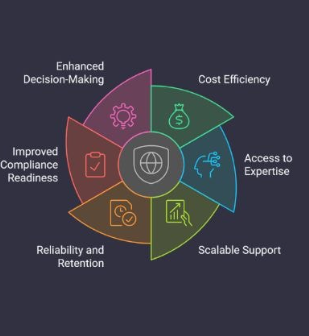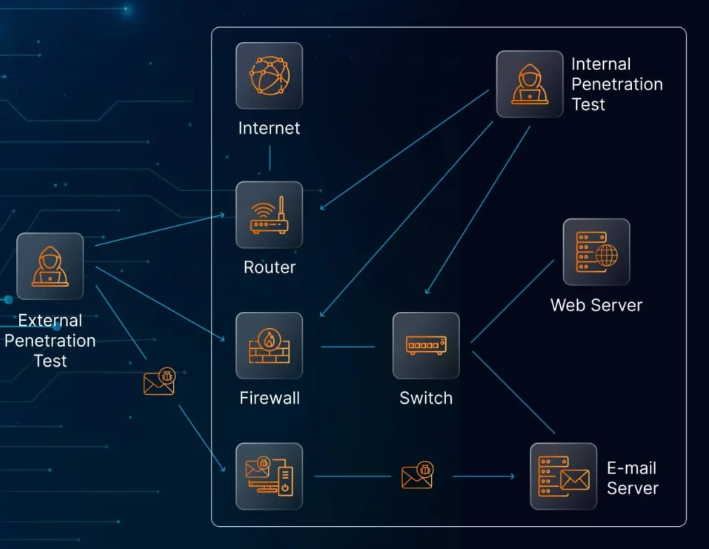
As cyber threats continue to evolve, businesses of all sizes are recognizing the importance of penetration testing in maintaining a secure environment. Penetration testing not only strengthens security but also builds trust with customers by showing proactive steps in safeguarding their data. However, there are several misconceptions surrounding penetration testing that can cloud its true value. In this article, we’ll debunk some of the most common myths to give you a better understanding of what penetration testing really involves and how it can benefit your business.
What Is Penetration Testing?
Penetration testing is a method used to evaluate the security of your systems by simulating cyberattacks. The goal is to identify vulnerabilities before malicious actors can exploit them. This testing mimics the tactics, techniques, and procedures used by hackers, which can vary from external attacks to insider threats. Penetration testers use both automated and manual methods to find security weaknesses that may go undetected by automated tools. The focus is not only on identifying potential vulnerabilities but also on providing actionable insights to resolve these issues, minimizing the risk of breaches that could harm your business financially, reputationally, or legally.
Penetration Testing Myths
- Penetration Testing is Only for Large Companies
One of the most widespread misconceptions is that penetration testing is only necessary for large organizations. While it’s true that large businesses are often prime targets for cybercriminals, smaller businesses are just as vulnerable. In fact, small and medium-sized enterprises (SMEs) are frequently targeted because they may have fewer security measures in place. A successful attack on an SME can have devastating effects, including potential closure. Penetration testing is vital for businesses of all sizes to protect their data and maintain customer trust.
- Penetration Testing Equals Vulnerability Scanning
Penetration testing and vulnerability scanning are often mistakenly seen as interchangeable. While vulnerability scans automatically check for known vulnerabilities, they can’t detect complex threats or nuances in your network’s security. Penetration testing goes a step further by simulating real-world attacks. It doesn’t just find vulnerabilities—it assesses how they can be exploited and what the actual risk is. Automated vulnerability scans may miss critical security gaps, while manual penetration tests focus on uncovering deeper flaws that could otherwise lead to significant breaches.
- Penetration Testing is Too Expensive
Another common myth is that penetration testing is prohibitively expensive. While penetration tests do come with a cost, they are a worthwhile investment in the long run. The cost of a single data breach can be far higher than the cost of regular penetration testing. According to IBM’s 2024 report, the average cost of a data breach is around $4.88 million. Penetration testing helps identify vulnerabilities early, reducing the likelihood of costly breaches and providing a more cost-effective approach to security over time.
- Penetration Testing Takes Too Much Time
Penetration testing is sometimes seen as time-consuming, especially when businesses need to balance it with daily operations. While penetration tests involve a thorough evaluation, they are usually performed within a defined scope and time frame to meet the specific needs of the organization. Moreover, advancements in automated tools have streamlined the process, making it more efficient without sacrificing accuracy. Ultimately, the time invested in penetration testing is minimal compared to the potential long-term security benefits.
- One Penetration Test is Sufficient
Some companies think that conducting a single penetration test will keep their systems secure for good. In reality, cybersecurity is an ongoing process. New vulnerabilities are constantly emerging as technology evolves and cybercriminals adapt their methods. A one-time test only provides a snapshot of your security at a given moment, leaving your organization open to future risks. Regular penetration testing ensures continuous monitoring, helping businesses stay ahead of emerging threats.
- It Doesn’t Matter if the Pen Test Provider is CREST-Accredited
When choosing a penetration testing provider, many businesses focus on cost and speed, sometimes overlooking certification. CREST accreditation is a mark of quality that ensures penetration testers are highly skilled and adhere to the latest industry standards. CREST-certified testers are rigorously vetted and employ ethical testing practices to ensure a thorough assessment of your systems. Working with an accredited provider guarantees that you receive the most reliable and up-to-date testing for your security needs.
- All Penetration Testing Services Are the Same
Not all penetration testing services are created equal. Some services rely heavily on automated tools, while others employ manual testing methods carried out by experienced professionals. The quality of the assessment can vary significantly depending on the provider’s expertise, the methodologies used, and the certifications held by the testers. Choosing the right provider is critical to ensure a comprehensive evaluation of your security, uncovering vulnerabilities that others may miss.
- Penetration Testing Disrupts Business Operations
Many believe that penetration testing can interfere with business operations or cause downtime. In reality, a well-planned penetration test is conducted with minimal disruption to your business. Testers work closely with you to define the scope and objectives of the test, ensuring that key systems and operations remain unaffected. Penetration tests are often performed in isolated environments or during off-peak hours to prevent any potential impact on critical services.
- Internal IT Teams Can Handle Penetration Testing
Some businesses rely on their in-house IT teams to conduct penetration testing, assuming they are equipped to do so. While internal staff may have a good understanding of the systems they manage, they often lack the specialized knowledge and objectivity needed for thorough penetration testing. External penetration testers bring fresh perspectives and are trained to use advanced testing methodologies. They also stay up to date with the latest attack techniques, making them more effective at identifying vulnerabilities.
Conclusion
Penetration testing is an invaluable part of any comprehensive cybersecurity strategy, helping to identify vulnerabilities before they can be exploited by attackers. While there are many misconceptions about the process, understanding its true purpose and value is crucial for businesses of all sizes. Regular penetration testing, conducted by skilled and certified professionals, enables businesses to stay ahead of emerging threats, protect sensitive data, and avoid costly security breaches. By addressing these common myths, you can make informed decisions about your organization’s cybersecurity needs and ensure robust protection for your business.





































